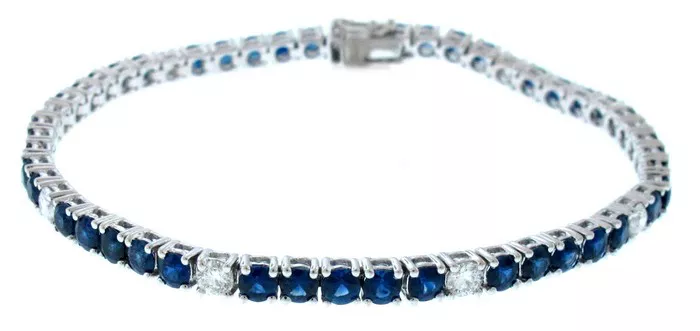Bracelets have held a significant cultural and historical significance throughout civilizations, and China is no exception. From ancient times to the modern era, Chinese bracelets have evolved in style, materials, and symbolism, reflecting the diverse cultural landscape of the country. Delving into the history of Chinese bracelets unveils a fascinating journey intertwined with tradition, craftsmanship, and symbolism.
Ancient Origins: The Birth of Chinese Bracelets
The history of Chinese bracelets dates back thousands of years, with evidence of their existence tracing back to ancient civilizations such as the Shang Dynasty (1600–1046 BCE) and the Zhou Dynasty (1046–256 BCE). During these periods, bracelets were crafted from materials like jade, a stone deeply revered for its spiritual significance and believed to possess protective qualities.
Jade bracelets held immense cultural importance and were often adorned by royalty and the elite as symbols of wealth, power, and status. In addition to their ornamental value, jade bracelets were also imbued with symbolic meanings, representing concepts such as longevity, prosperity, and harmony. The intricate craftsmanship involved in carving jade bracelets showcased the skill and artistry of ancient Chinese artisans.
Dynastic Influences: Bracelets Through the Ages
As China transitioned through various dynasties, the styles and materials used in bracelet making evolved, reflecting the changing cultural, social, and political landscapes of the times. During the Han Dynasty (206 BCE–220 CE), for example, bracelets adorned with intricate designs and motifs became popular, with gold and silver emerging as favored materials alongside jade.
The Tang Dynasty (618–907 CE) witnessed a flourishing of arts and culture, leading to innovations in jewelry design. Bracelets during this period often featured elaborate filigree work, cloisonné enameling, and gemstone embellishments, showcasing the mastery of Tang artisans. These bracelets not only served as fashion statements but also symbolized auspicious wishes for prosperity, happiness, and good fortune.
The Ming Dynasty (1368–1644 CE) saw a resurgence of interest in jade bracelets, with artisans experimenting with new techniques and designs to create pieces of unparalleled beauty. Jade bangles, in particular, became highly sought after, with their smooth, polished surfaces symbolizing purity and perfection. Meanwhile, bracelets adorned with motifs inspired by nature, such as flowers, birds, and dragons, reflected the deep spiritual connection between the Chinese people and the natural world.
Cultural Significance: Symbolism in Chinese Bracelets
Chinese bracelets are imbued with rich symbolism, with each design, motif, and material carrying profound cultural meanings. For instance, the dragon, a mythical creature symbolizing power, strength, and good fortune, frequently adorns bracelets, particularly those crafted during the Qing Dynasty (1644–1912 CE). Dragon motifs were often intricately carved into jade bracelets or depicted in gold and silver filigree work, serving as talismans of protection and prosperity.
Similarly, floral motifs such as the lotus, peony, and chrysanthemum are commonly found in Chinese bracelets, each carrying its own symbolic significance. The lotus, for example, represents purity, enlightenment, and rebirth, making it a popular motif in Buddhist-inspired jewelry. Peonies symbolize wealth, prosperity, and honor, while chrysanthemums are associated with longevity and vitality.
The use of auspicious symbols and motifs in Chinese bracelets extends beyond mere ornamentation; it reflects a deep-seated belief in the power of symbolism to influence one’s destiny and fortune. By wearing bracelets adorned with auspicious motifs, individuals seek to invite positive energies into their lives and ward off negative influences.
Regional Variations: Diversity in Chinese Bracelet Styles
China’s vast geographical and cultural diversity has given rise to a wide array of bracelet styles, each reflecting the unique customs, traditions, and beliefs of different regions. For example, in the southwestern province of Yunnan, bracelets crafted from silver and adorned with intricate tribal motifs are highly prized for their cultural significance and craftsmanship.
In contrast, the coastal regions of Fujian and Guangdong are renowned for their exquisite filigree work and enamel bracelets, which feature delicate designs inspired by nature and mythology. These bracelets often incorporate motifs such as fish, dragons, and phoenixes, symbolizing abundance, strength, and harmony.
In northern China, particularly in regions such as Inner Mongolia and Xinjiang, bracelets made from materials like turquoise, coral, and agate are favored for their bold colors and striking designs. These bracelets often feature elaborate geometric patterns and symbols derived from traditional folk art, reflecting the cultural heritage of the region’s ethnic minorities.
Modern Revival: Contemporary Trends in Chinese Bracelets
In recent years, there has been a resurgence of interest in traditional Chinese bracelets, driven by a growing appreciation for heritage craftsmanship and cultural identity. Contemporary designers and artisans are reimagining classic bracelet styles by incorporating modern elements while staying true to traditional techniques and motifs.
One notable trend is the fusion of traditional materials such as jade, gold, and silver with contemporary design aesthetics, resulting in bracelets that appeal to a younger, fashion-conscious audience. Designers are experimenting with innovative shapes, textures, and finishes, breathing new life into age-old traditions while catering to evolving consumer tastes.
Furthermore, Chinese bracelets are increasingly being recognized on the global stage, with international fashion houses and luxury brands drawing inspiration from traditional Chinese motifs and craftsmanship. This global recognition not only celebrates China’s rich cultural heritage but also fosters cross-cultural exchange and appreciation.
Conclusion
The history of Chinese bracelets is a testament to the enduring legacy of craftsmanship, symbolism, and cultural identity. From ancient jade bangles to contemporary designer pieces, Chinese bracelets continue to captivate and inspire with their timeless beauty and profound symbolism.
As we navigate the complexities of the modern world, the significance of preserving and honoring traditional craftsmanship becomes increasingly important. By embracing the rich history of Chinese bracelets and celebrating their cultural heritage, we not only pay tribute to the artisans of the past but also ensure that these treasured traditions endure for generations to come. In a world of constant change, Chinese bracelets serve as enduring symbols of identity, connection, and resilience, reminding us of the timeless beauty and wisdom of our shared heritage.

